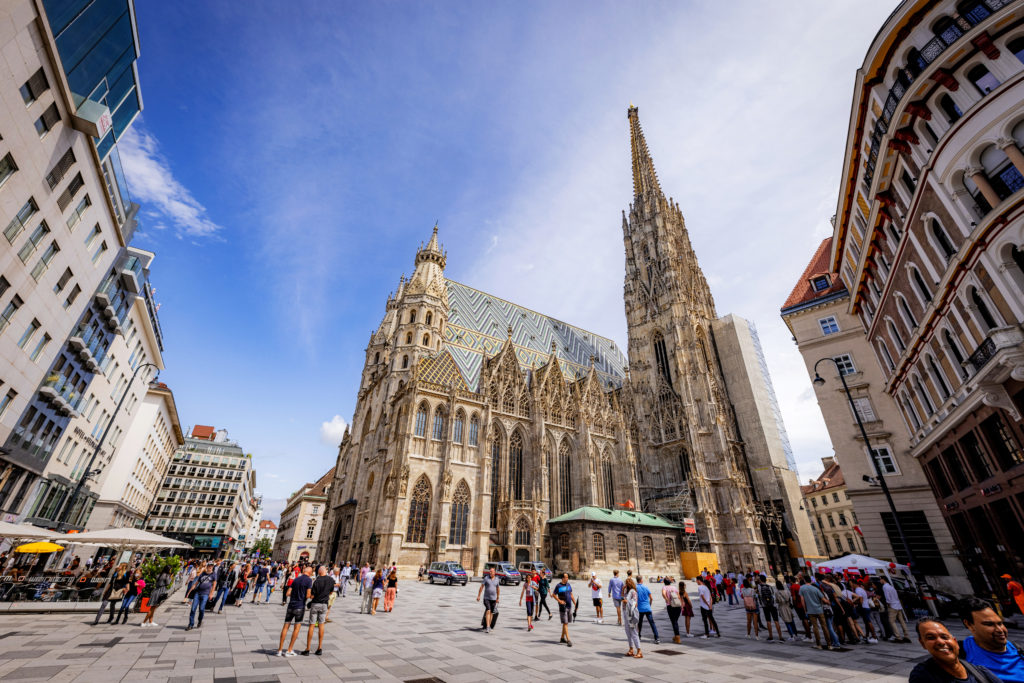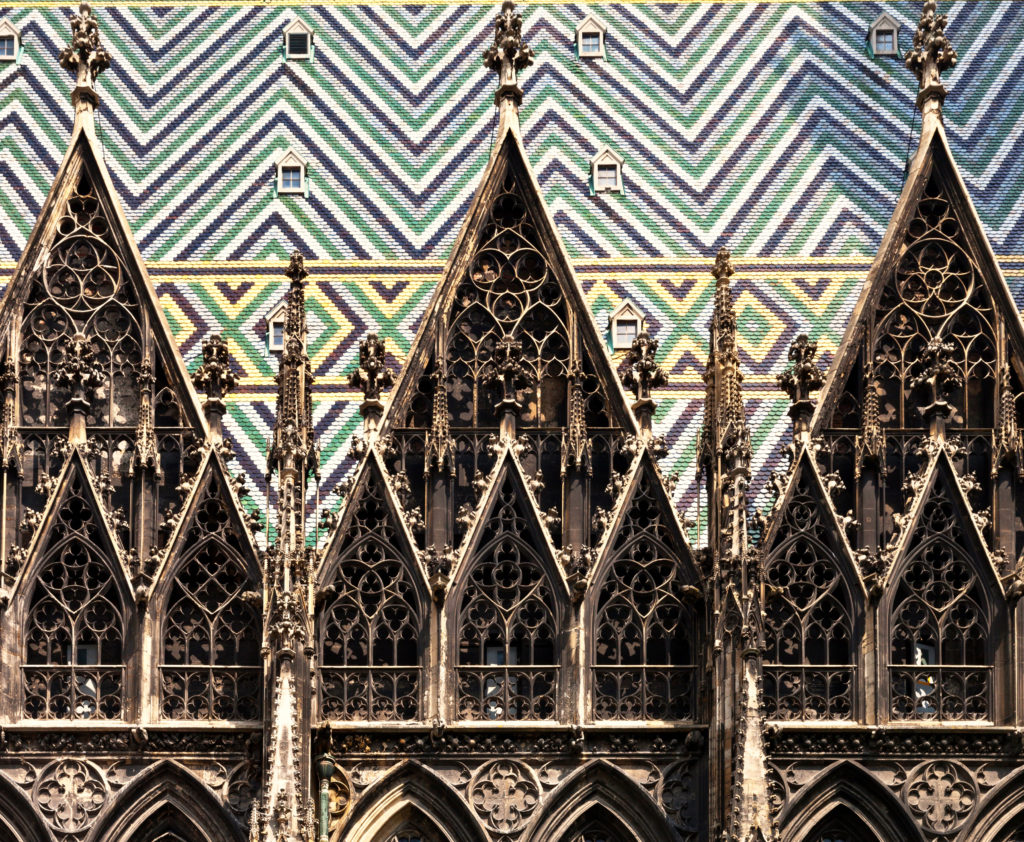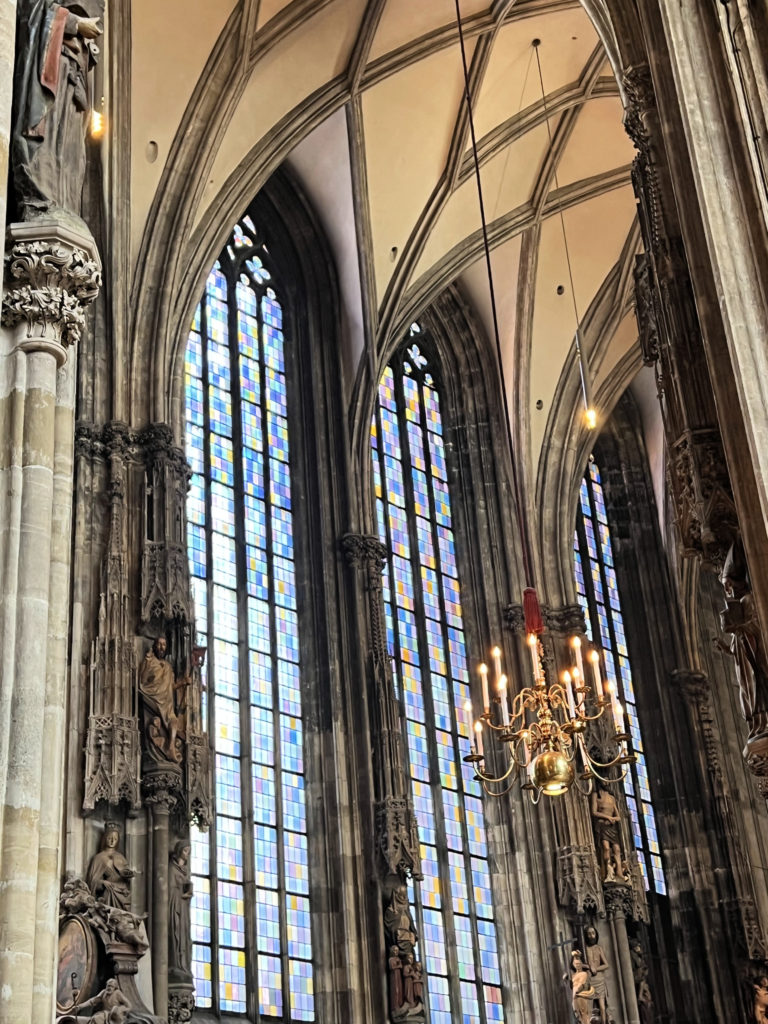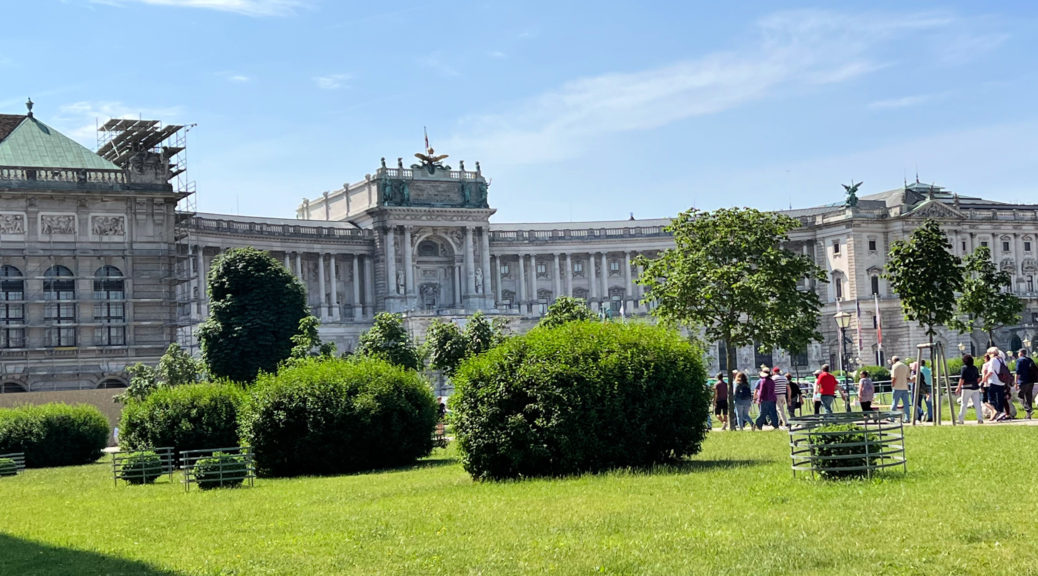
Vienna Walking Tour
Our next port of call was Vienna, where we would spend two days. Vienna is the capital and largest city in Austria. It has been inhabited since 500BC when the Celts first settled here. The historic City Centre was placed on the list of UNESCO World Heritage Sites in 2001.
Vienna, situated on the Danube River in the eastern part of Austria, developed from early Celtic and Roman settlements into a medieval and Baroque city, eventually becoming the capital of the Austro-Hungarian Empire. It played an essential role as the leading European music centre…consolidating Vienna’s reputation as the ‘musical capital’ of Europe. Vienna is also rich in architectural ensembles, particularly Baroque mansions and gardens as well as the late 19th-century Ringstrasse ensemble lined with grand buildings, monuments, and parks.
https://whc.unesco.org/en/list/1033/
Another interesting history note is that Adolf Hitler spoke from a balcony at Neue Burg, part of The Hofburg, to announce Austria’s “annexation” into Germany. A picture of the Neue Burg is above the blog title. Vienna is now on the UNESCO’s List of World Heritage in Danger because of a high-rise project that the UN body says “will undermine the area’s historic value.”
Even as we were on the bus to go to the meeting place for our walking tour, it was obvious Vienna was a special place. One of the buildngs we saw was St. Francis of Assisi Church, a Catholic church built to celebrate the 50th anniversary of the reign of Emperor Franz Joseph I of Austria. The church is also known as the Emperor’s Jubilee Church.
Emperor Franz Joseph I is also important to the Museum of Natural History, Vienna. It is one of the most important natural history museums in the world. In 1750, the Emperor purchased a large collection of natural history objects that would become part of the museum. In addition to serving as a museum open to the public, it is also a research institution with 30 million objects available to 60 scientists and guest researchers.
Pictured next is the Vienna City Hall. It was constructed between 1872 and 1883. It houses the office of the mayor, the city council chambers and the Vienna Langtag diet (state assembly). At the top of the 320-foot tower is a statue of Rathausmann, adding another 11 feet to the tower’s height; it was attached to the tower in 1932. The statue’s armor was modeled after Emperor Maximillian I. Rathausmann is a symbol of Vienna.
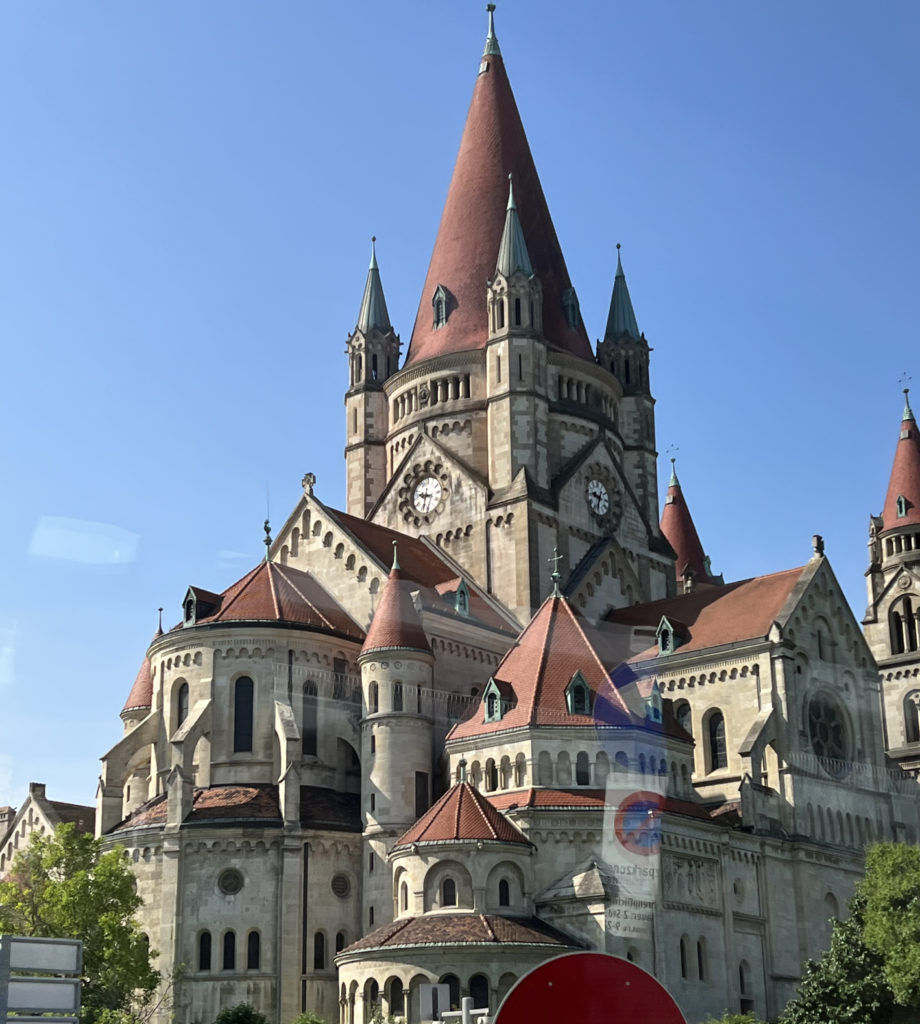
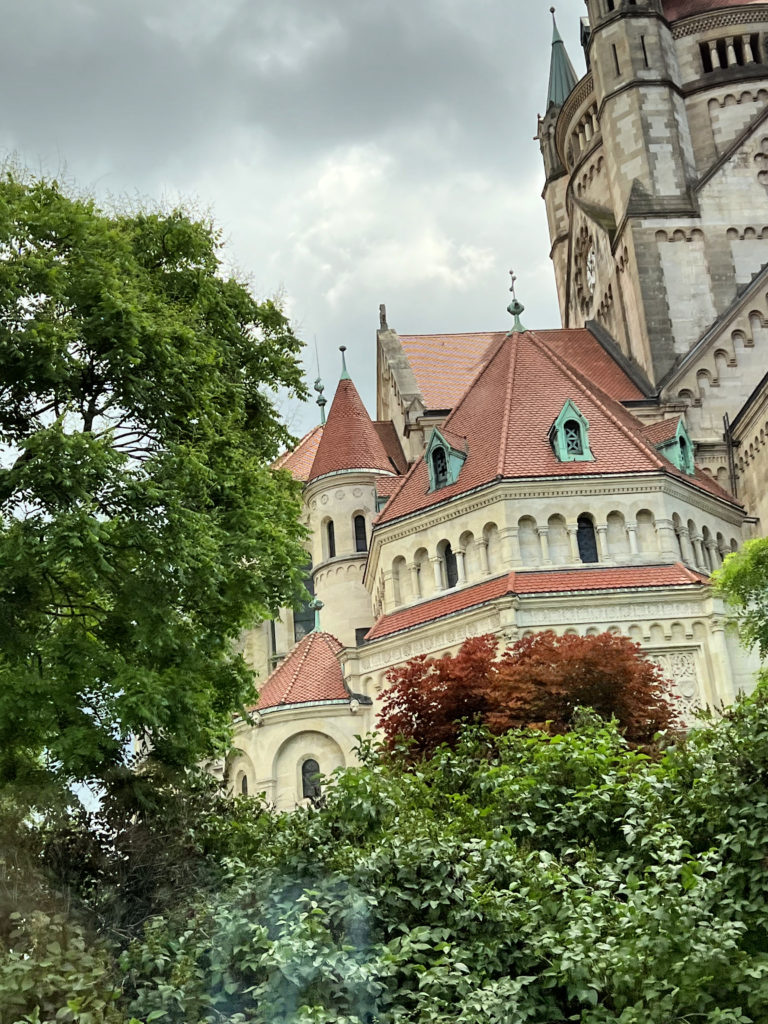
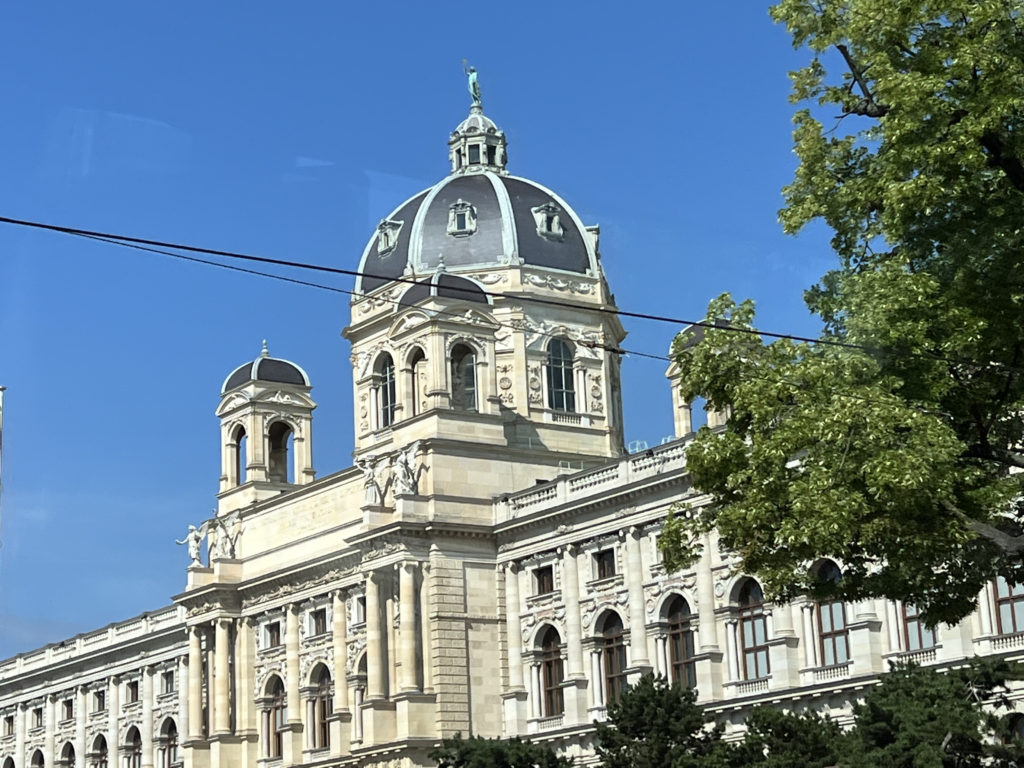
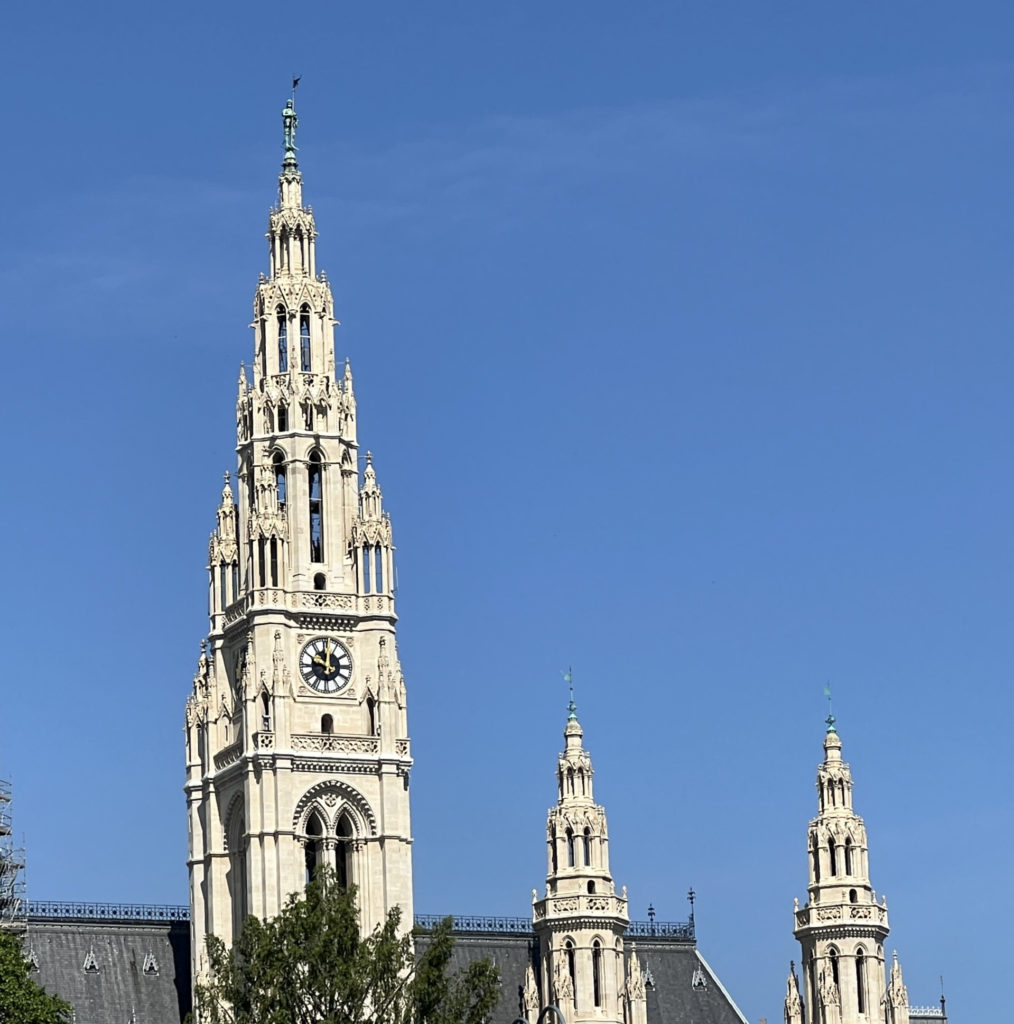
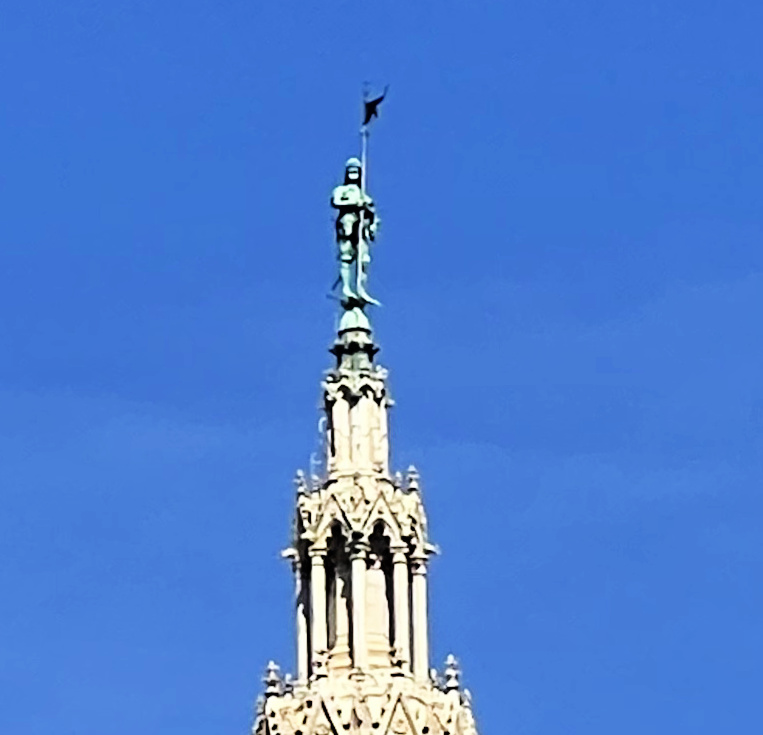
During our walking tour, we would see some of “The Hofburg.” The Hofburg is not one building, but rather several inter-connected buildings, gardens and open squares. The Hofburg is where the Imperial family lived and ruled. We first walked through the gardens in the Hofburg’s Volksgarten Park. It is famous for its rose gardens, supposedly the most beautiful in Vienna. Also in the Park is the Sisi Memorial. Sisi was actually the Empress Elisabeth of Austria. She married Hapsburg Emperor Franz Joseph I when she was only 16. She didn’t like all of the restrictions imposed by her nobility status. One article I read about Sisi compared her to Princess Diana. But the Emperor was said to truly love her and had the memorial created in 1907 after she was assassinated at age 60.
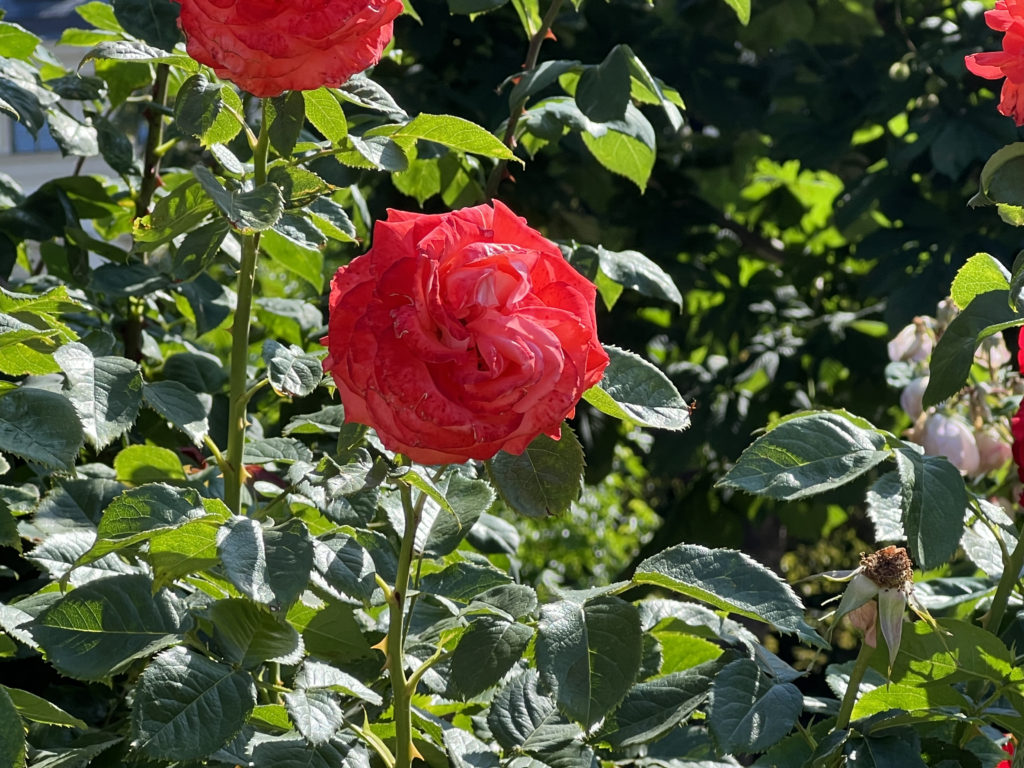


The Hofburg Palace was built in the 13th Century, but there were numerous additions over the years.
The palace complex – one of the largest in the world – is particularly interesting, as its major buildings reflect more than 700 years of architectural history. In fact, nearly every Austrian ruler since 1275 ordered additions or alterations to it, leaving a distinct architectural legacy…Together with its many squares and gardens, the Hofburg occupies an area of some 59 acres and is, in many ways, a “city-within-a-city” comprising 18 groups of buildings, 19 courtyards, and a staggering 2,600 rooms.
https://www.planetware.com/vienna/imperial-palace-a-w-hofbur.htm
One of the older parts of the palace complex is the Swiss Gate or Schweizertor. Emperor Ferdinand I (1503-64) had the gate built in 1552. The term “Swiss Gate” began being used in the 18th Century because of the Swiss Guard who were stationed there. The gate originally had a drawbridge that, when lowered, extended over a moat that existed at the time. The pulleys that operated the drawbridge can still be seen above either side of the oval opening.
The Hofburg served the House of Habsburg monarchs from 1276 until the fall of the Habsburg monarchy in 1918. Since 1946, the Hofburg Palace has served as the residence and offices for the Austrian president. As we walked the grounds, I took pictures which portray some of the magnificent intricacies of the Hofburg.
Also pictured is a statue of Francis II/I. It was in the inner courtyard of the Hofburg Palace. Francis was known as Francis II when he was the Holy Roman Emperor. When the empire was dissolved, he became the first Hungary Emperor and was then known as Francis I. The four figures surrounding him represent religion, peace, justice and strength.
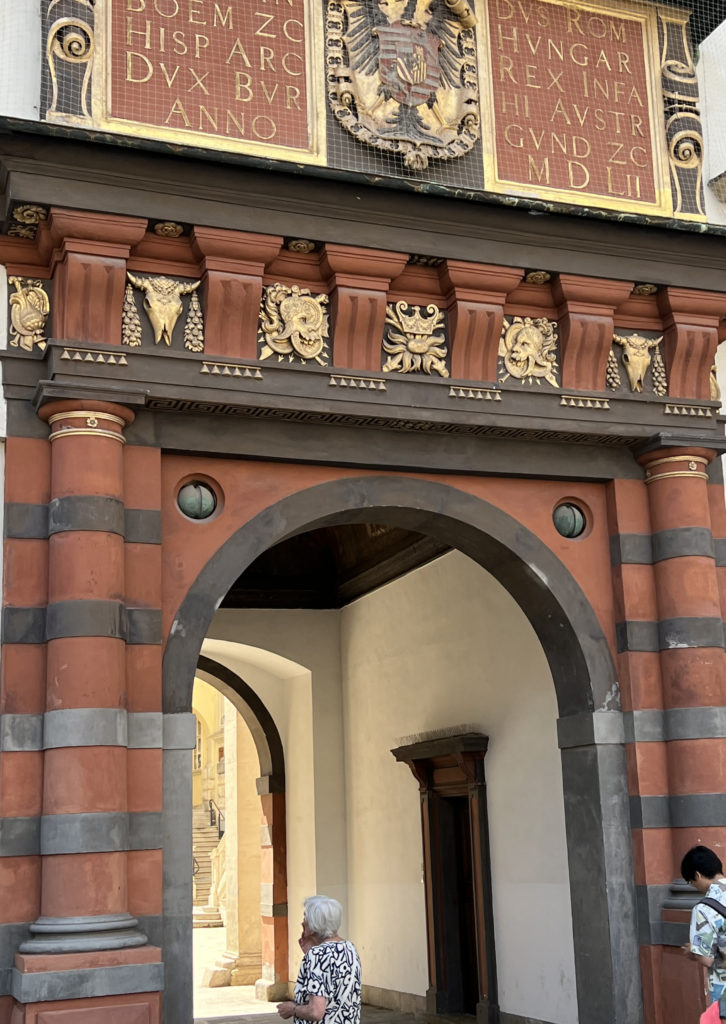
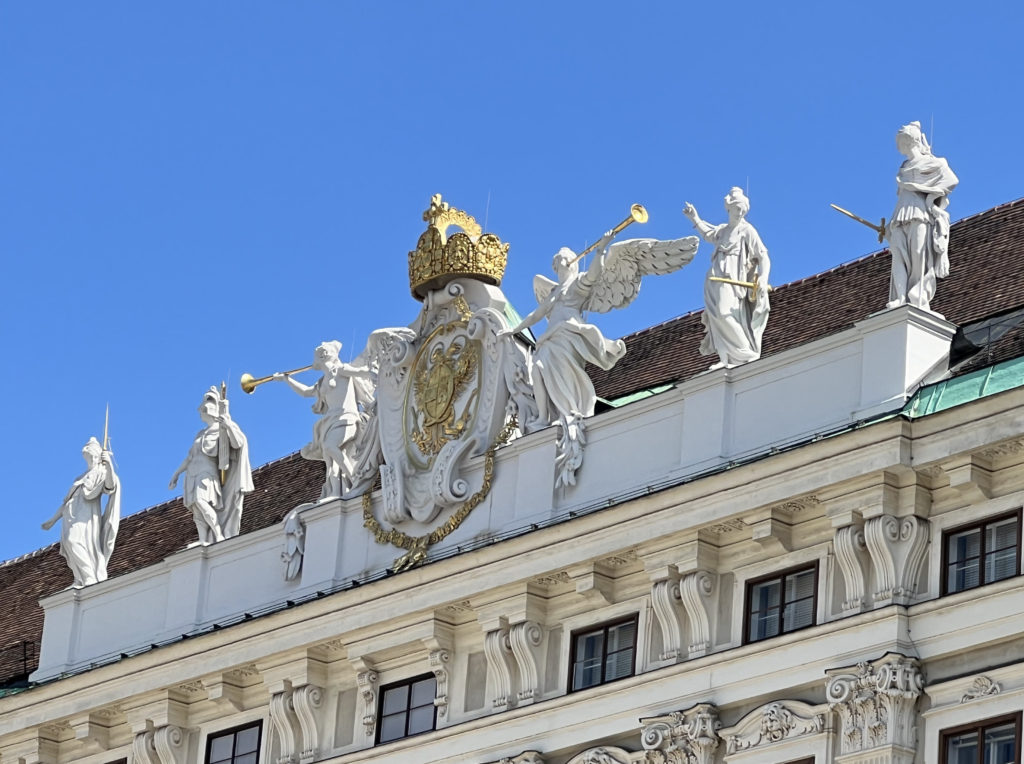

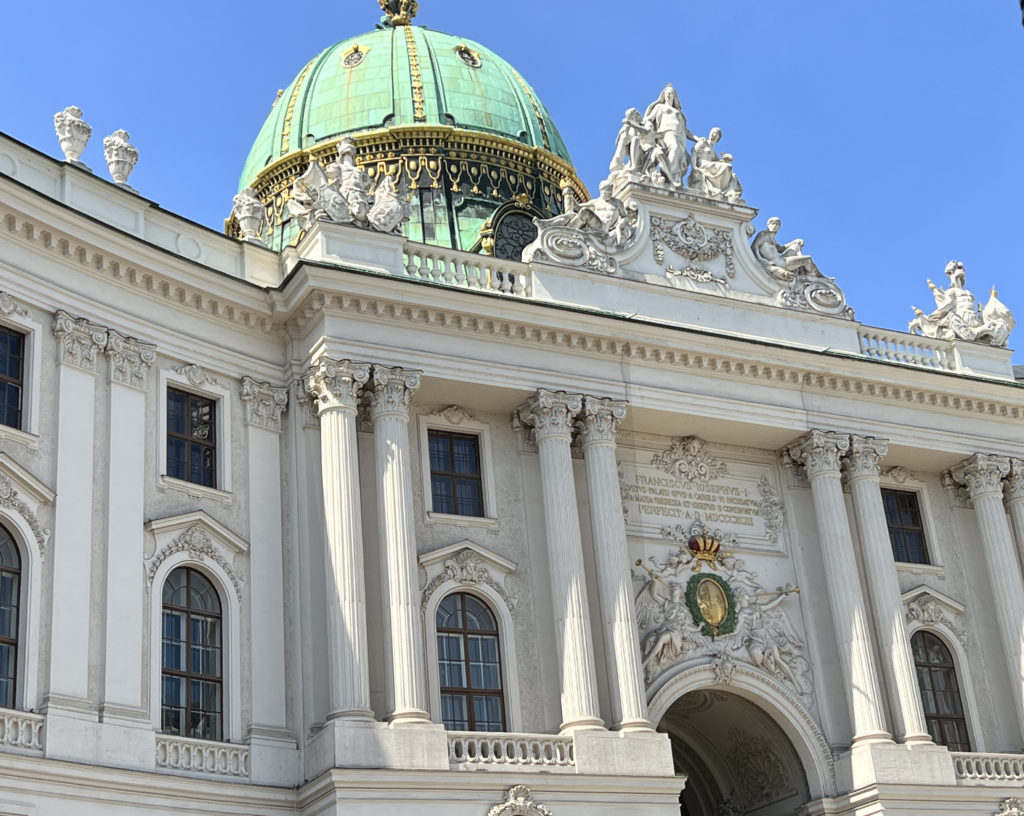
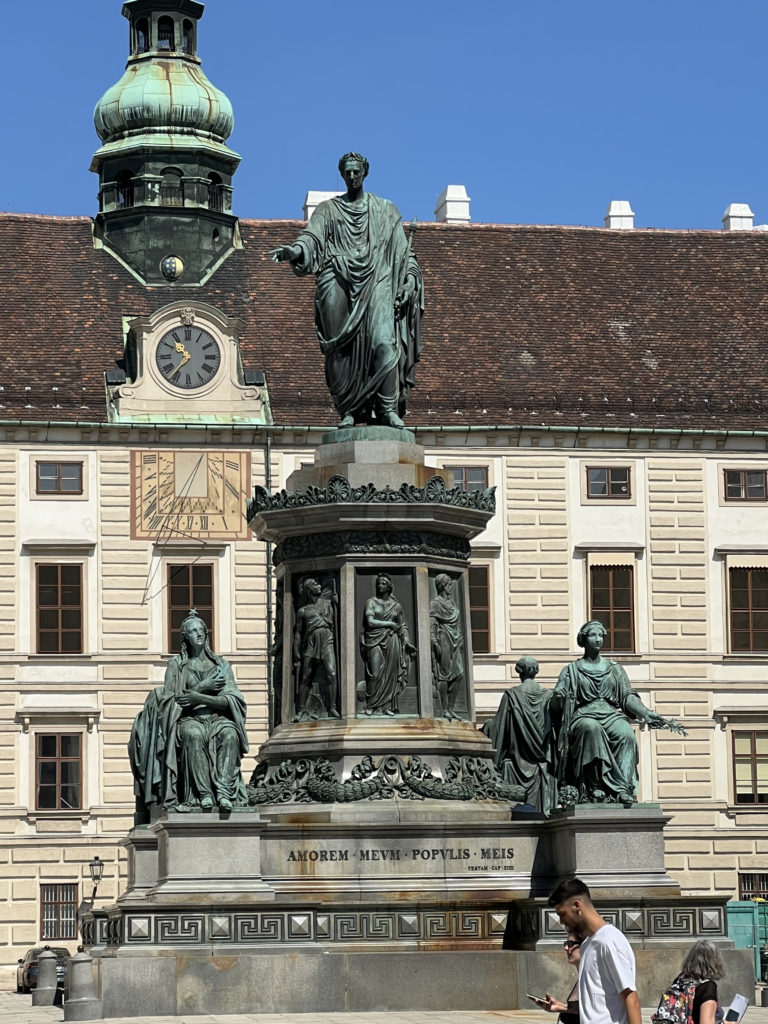
To my surprise, the Spanish Riding School has been part of the Hofburg Palace complex since the 1500s. It was first named during the Habsburg Monarchy in 1572. The school operated on a wooden arena in the Josefplatz, a public square in the Hofburg complex. In 1729, construction of the riding hall used today was begun. We did not see a performance, but did see some of the Lipazzan stallions.
The first picture below is a statue of a flying Pegasus. It is in the courtyard where the stalls of the Lipazzan stallions are stabled. Also pictured are Lipazzan stallions. They were named for the Lipizza Stud of the Habsburg monarchy. The horses are grey in color until age eight or nine when their coat turns white.

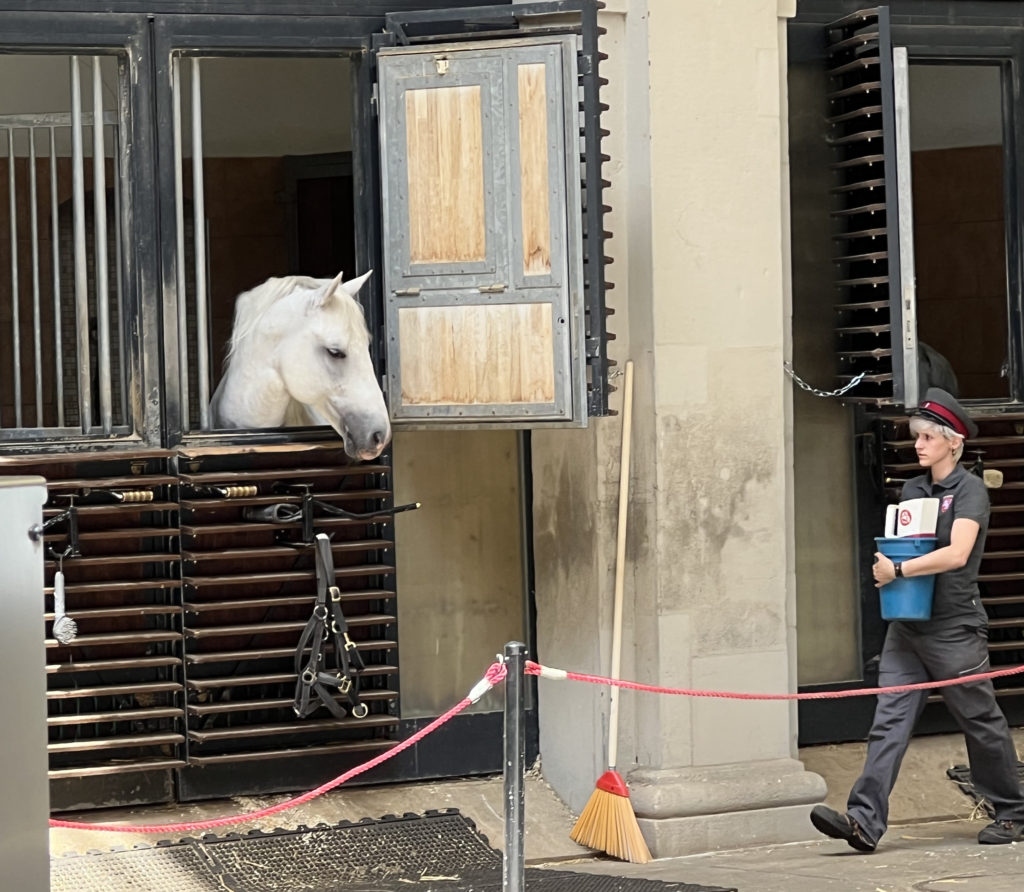

Below is the Vienna Plague Column which was constructed to celebrate the end of the plague. Deaths occurred across Europe, but Vienna was especially vulnerable because of the number of traders who passed through the city. Estimates of deaths due to the plague vary from 12,000 to 75,000 people in Vienna. The column was erected in 1694, replacing a wooden one constructed in 1679 at the height of the plague. Similar to the vow made by the people of Oberammergau, Habsburg Emperor Leopold I pledged to erect a column if God would end the plague.
The Vienna Plague Column has elements of both religion and the Habsburg dynasty. In the second picture below, I have numbered different sections of the column. The base of the column (Section 1) represents faith defeating the plague. A figure with a cross stands over another figure, head down, probably representing the plague. Moving up, the second section depicts Leopold I praying for the plague to end. The message was that the intercession of Leopold I resulted in God ending the plague. The third section of the Plague Column are angels, serving as an intermediary between God and mankind. Section 4, in gold, depicts cherubs and the trinity – God the Father, Jesus holding the cross, and the Holy Spirit pictured as a dove.
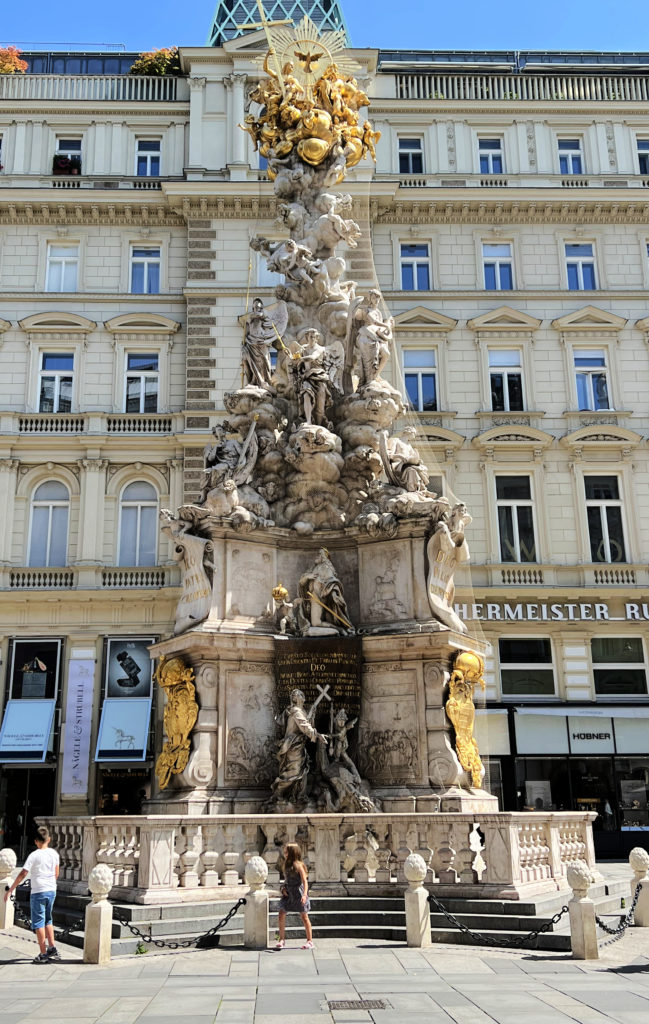
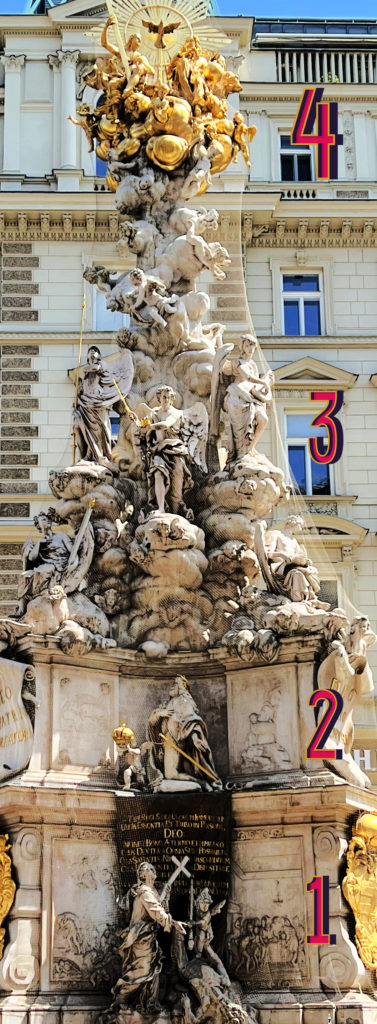
After our walking tour, we walked back to St. Stephen’s Cathedral. The Cathedral is the main Roman Catholic church in Vienna and the seat of the city’s Archbishop. It sits in Stephansplatz, a square deriving its name from the Cathedral. Construction of its tallest tower, “Steffl,” began in 1356. People with lots of energy (that wasn’t us) can climb the 343 steps for beautiful views of Vienna. There are 13 bells in the tower. During its long history, Mozart was married at the Cathedral and Joseph Haydn served as a choirboy. The Cathedral suffered heavy damage during World War II and was then rebuilt. St. Stephen’s has a beautifully tiled roof which included an Imperial double-headed eagle and the coat of arms of the city of Vienna.
When we visited the church it was Pentecost Sunday. The Cathedral should have been open to visitors, but the service was still in progress. We were able to stand in in the rear of the church and from there observed its beauty.
